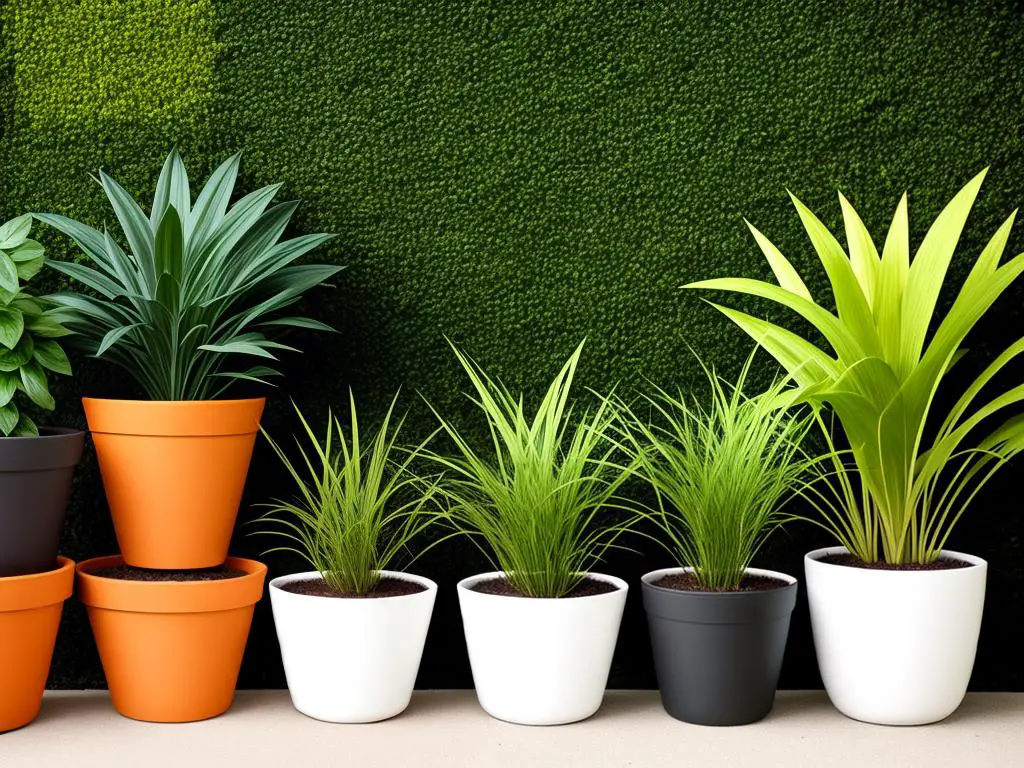Immersing oneself in the enchanting world of houseplants offers much more than simply adding a dash of green to the interiors. Houseplants, with their incredible variety, luminous appeal, and health-boosting properties, have become quintessential components of contemporary home decor. This discourse aims to engage the reader in understanding the innate dynamics of houseplants – their types, origins, and associated benefits. It further navigates through the fascinating journey of selecting the ideal houseplants based on living conditions, environmental factors, and personal likes. Emphasizing the upkeep requisites like light, humidity, watering regimes, soil choices, and pest control, it demonstrates how you can nurture these splendid indoor companions. Beyond that, the topic expands on replicating nature inside your abode through propagation, either with seeds or cuttings, accompanied by practical advice and instructions. Eventually, unveiling the art of curating an indoor green space, it provides insights into plant arrangement, pot selection, stylising, and integrating plants harmoniously within different room scenarios.
Understanding Houseplants
Importance of Houseplants in Home Decor
Houseplants play an integral role in home decor, not only by adding beauty to the home but also by improving the air quality. From a visual perspective, they add a touch of nature and bring a calming, healing effect to living spaces. Pot plants, hanging plants or terrariums can serve as striking focal points in any room.
What’s unique about houseplants
What’s unique about houseplants is their versatility. They can complement any style, from rustic to modern, minimalist to extravagant, serving as essentially natural art pieces that transform with the growth of the plant. The vibrancy of their green or colourful foliage add life to the room, while their pots can be an additional aesthetic feature in their own right, matching the larger interior decor theme.
Health and Wellbeing Impact
Houseplants significantly contribute to the improvement of mental and physical wellbeing. One of their main benefits is their ability to cleanse the air. They are natural air purifiers, removing toxins and releasing oxygen into the environment. This aids in making the air cleaner and more breathable, proving particularly beneficial to those with respiratory problems.
On a psychological level, houseplants can have a positive effect on one’s mood and productivity levels. The act of taking care of plants also promotes mindfulness and can act as a stress reliever, too. The interaction with the plants and the satisfaction of their growth contributes to a sense of purpose and achievement.
Moreover, many studies have shown that they also help in reducing noise levels. Plants can absorb, reflect, and diffract sounds, making a room quieter and more peaceful.
Common Houseplants and Their Origins
There are various categories of houseplants, all originating from different parts of the world.
The Spider Plant, native to tropical and southern Africa, is one of the most popular houseplants due to its easy upkeep and air purifying qualities. It grows long, arching leaves and tiny white flowers.
The Aloe Vera, originating in the Arabian Peninsula, is an all-in-one package. Not only does it enhance the aesthetics of the room, but it also has medicinal properties. Its gel is known for healing burns and cuts.
The Snake Plant, native to West Africa, is well noticed for its tall, pointed leaves. It’s one of the best plants for improving indoor air quality.
The Peace Lily, originating in America’s tropical region, is highly decorative with its dark leaves and occasional white flowers. This plant is excellent for removing toxins from the air.
In Summary
In summary, houseplants serve as far more than merely decorative objects. Their influence extends to enhancing indoor air quality, promoting health, and contributing positively to overall wellbeing. These plants play a vital role within any home decor, and their value becomes increasingly apparent as we grow to understand their origins and the range of types available.
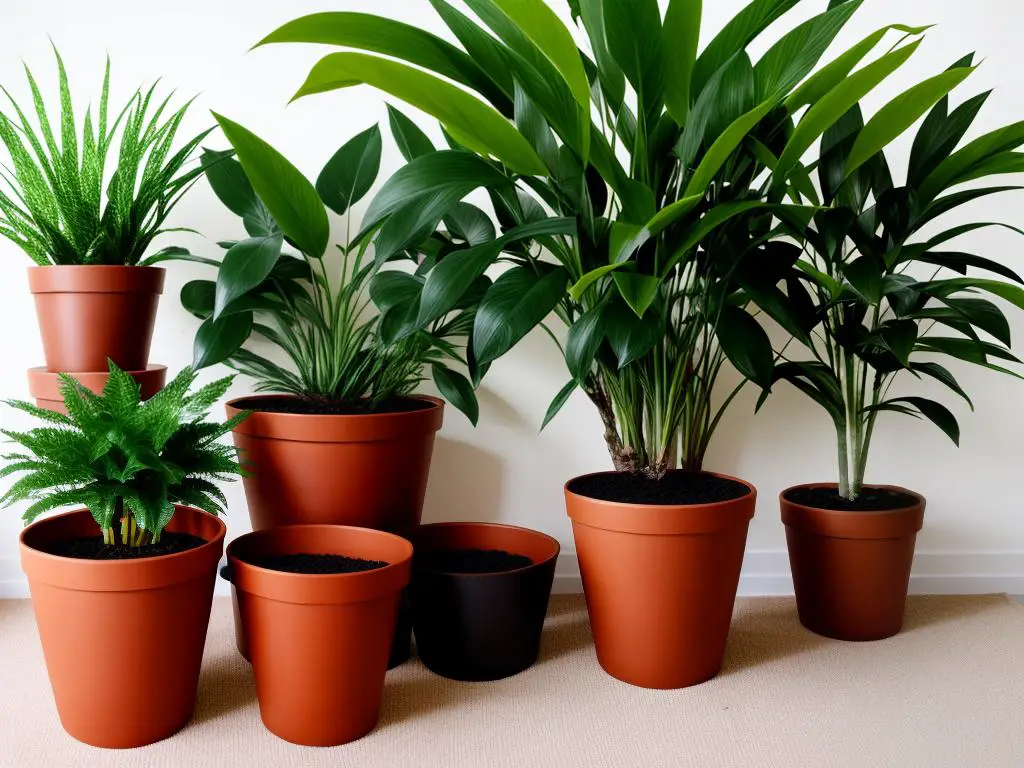
Plant Selection
Selecting the Ideal Houseplants: A Comprehensive Guide
Embarking on an exploration of the houseplant kingdom can initially appear daunting – given the thousands of varieties, each encompassing its own unique needs and traits. However, be assured that the process of identifying the perfect plant for your home is perfectly achievable, provided it’s approached with a touch of insight and understanding.
Understanding Your Living Conditions
The first step in selecting suitable houseplants involves evaluating your living conditions. Principally, these conditions are determined by factors such as light exposure, humidity level, and temperature range in your home.
Light is perhaps the most critical determining factor which governs how well a plant can thrive in a particular environment. For example, certain plants, such as succulents and cacti, require ample sunlight and will flourish in windowsills or conservatories. On the other hand, some species like the snake plant or peace lily, can survive in low-light environments; making them a suitable choice for rooms with small or no windows.
Humidity levels are another aspect to consider, as they can fluctuate drastically within a home. Kitchens and bathrooms often possess higher humidity, providing an optimal environment for tropical plants such as ferns and orchids. Conversely, if you reside in a dry home, it’s best to opt for plants that can withstand low humidity, like the spider plant or snake plant.
The overall temperature range in your house also determines how well certain plants will thrive. Most houseplants prefer a stable temperature range, anywhere from 15 to 25 degrees Celsius. However, certain plants like the Pothos or Dieffenbachia can tolerate wider fluctuations.
Consideration of Personal Preferences
Following the assessment of your living conditions, the next criteria for houseplant selection should be your personal preferences. Are you interested in foliage or flowering plants? Large plants that can be used as standalone features, or smaller ones that can be arranged decoratively on tabletops or wall shelves?
If you’re a beginner, you might want to consider plants that are easy to care for. Succulents, for example, need little attention, watering, or feeding, and can adapt to most environments. Similarly, the spider plant is easy to maintain and is particularly good at purifying the air in your home.
You might also need to consider any allergies that anyone in your household might have. Some plants are known to aggravate certain conditions, for example, the sap from Rubber and Ficus plants can cause an allergic reaction in some people.
Maintenance Requirements
Each houseplant has its own specific maintenance requirements, making it imperative to consider these before bringing a new plant into your home.
Some low-maintenance houseplants include snake plants, ZZ plants, and Pothos. These plants require less frequent watering and feeding compared to others. On the other end of the spectrum, you have high-maintenance plants like orchids, which require specific care, constant attention, and the right environmental conditions to bloom.
Wrapping Up
Choosing and caring for houseplants can be an incredibly fulfilling journey. Taking into account your personal preferences, living conditions and how much time you can devote to plant care can help you to cultivate a little indoor jungle. Whether you’re seeking decoration, a natural air purifier, or simply enjoy having a bit of greenery around, selecting the right houseplants can elevate your living space and give a boost to your overall well-being.
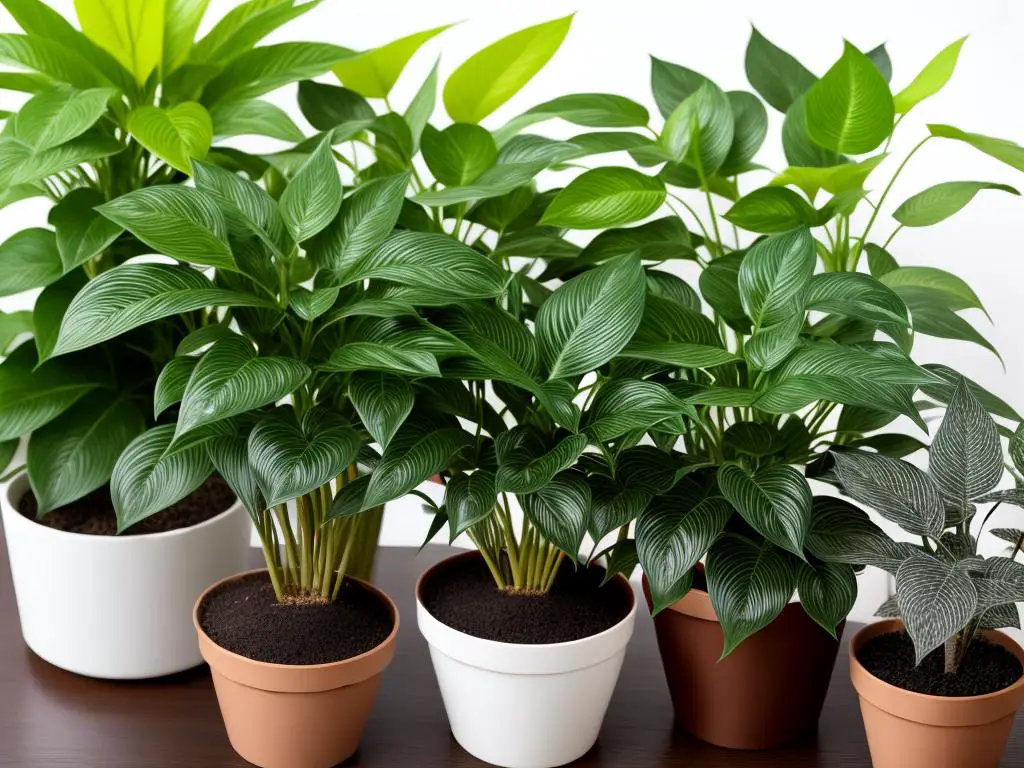
Care and Maintenance
Getting to Grips With the Basics of Houseplant Care
It’s important to understand that different houseplants come with a variety of needs, but at their core, all need a balance of light, water, soil, and temperature to survive and thrive. These needs often vary directly in line with their native environments. Take the fern, for example, a plant that hails from humid, shady locations such as the forest floor. Naturally, they need a darker, damper setting, while cacti, coming from arid desert areas, favour a bright and dry atmosphere.
The Importance of Light
One of the vital parts of houseplant care is providing the right amount of light. Many houseplants flourish in areas with indirect light as opposed to direct sunlight, so the best locations are usually near windows facing north or east. On the other hand, certain houseplants like succulents and cacti require plenty of direct sunlight. To best care for your green companions, it’s important to research their individual light requirements.
How and When to Water
Sadly, overwatering is a common pitfall many plant carers fall into, resulting in root rot and, eventually, the death of the plant. The majority of houseplants need their soil to dry out entirely between thorough waterings. You can check this by plunging your finger around an inch into the soil – if it feels dry, it’s time to give your plant a drink.
Choosing the Right Soil
Selecting the right soil is crucial for the health of your houseplant. Most plants will do well in a light, well-draining potting soil. Some, like orchids, have more particular needs, requiring a specific medium, while plants like succulents and cacti prefer a more gritty, sandy soil mix.
Nourishing Your Houseplants
Just like us, plants need sustenance to survive, usually deriving this from the soil in the form of fertilisers. It’s critical to not overdo it when feeding houseplants, with most requiring just a sprinkle of plant food every 2-3 months. Overfeeding can lead to a multitude of issues, including root burn.
Pruning Your Plants
Pruning is the process of removing brown, yellowing, or dead leaves from your houseplant, allowing the plant to direct its energy towards new growth. Certain houseplants, like the peace lily or the monstera, benefit from occasional pruning sessions.
The Art of Repotting
When your houseplant outgrows its pot or the soil loses its nutrients, it’s time to consider repotting. This typically involves transferring the plant to a slightly bigger pot with new, nutrient-rich soil.
Detecting and Preventing Plant Diseases
Keep an eye out for signs of fungal, bacterial, or viral diseases in your plants. Watch out for signs like poor growth, spots, discolouration, and mould. Often these issues stem from over or underwatering, limited air circulation, and incorrect temperature control. Good prevention strategies include excellent plant care, cleanliness, and preventing overcrowding of your plants.
Conclusion: Looking After Your Indoor Garden
Caring for houseplants might seem like a big task at first, but once you get the hang of their basic needs and start to notice their growth patterns, you can nurture beautiful, healthy plants with confidence. With a keen eye, you can spot problems early and tweak your care methods accordingly, ensuring your indoor greenery always looks its best. Not only do houseplants enhance your surroundings, but looking after them can also be incredibly therapeutic — a hobby well worth exploring.
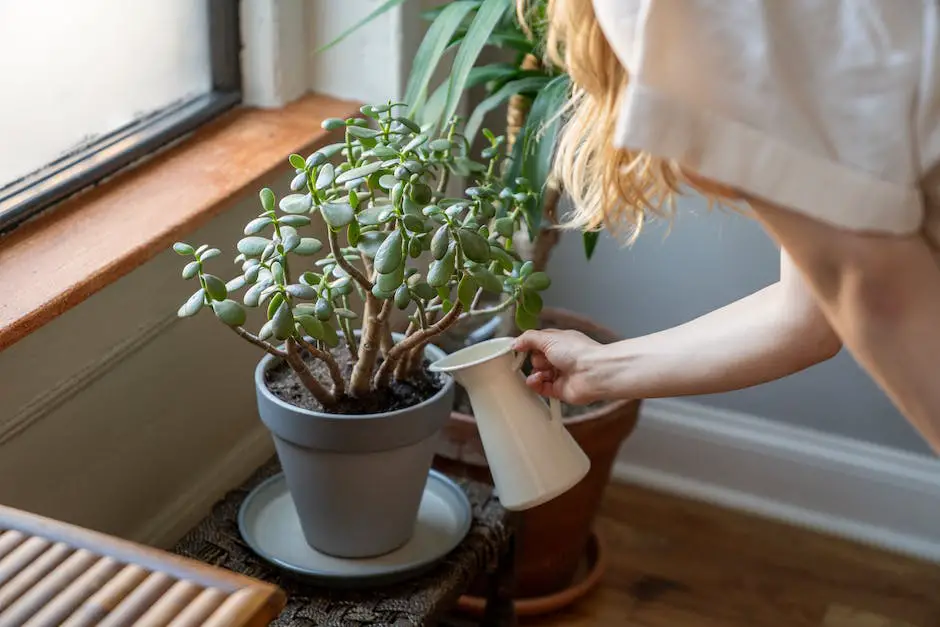
Propagating Houseplants
Dipping Your Toes Into the World of Plant Propagation
Plant propagation might sound like a complicated term, but it’s simply the process of creating new plants. Most of the time, this is done using cuttings or seeds from an existing plant, offering a cost-effective and rewarding way to expand your indoor plant collection. If you’re keen on developing your indoor green space further, propagation is often a more fulfilling and affordable alternative to buying ready-grown houseplants.
Propagation through Seeds
Let’s first delve into the propagation of plants using seeds. This process, referred to scientifically as ‘sexual propagation’, involves the fusion of male and female plant gametes to produce a seed. The seed then develops into a new plant.
One common method of propagation with seeds is to start the process indoors. You can start by purchasing seeds from a horticultural supplier, or alternatively, you can obtain seeds from ripe fruit.
- Start by filling a pot or tray with a commercial seed compost mixture. Make sure the container has drainage holes to prevent overwatering.
- Following the instructions on the seed packet, sprinkle the seeds evenly over the compost.
- Cover the seeds with a thin layer of compost, unless otherwise instructed on the packet.
- Water the seeds gently using a watering can with a rose head to prevent the seeds from being disturbed.
- Cover the pot or tray with a clear glass plastic bag or place in a propagator to maintain humidity levels.
- Place the container in a warm, well-lit area, but out of direct sunlight.
- Monitor the seedlings and once they are large enough to handle, they can be transplanted to individual pots.
Stem Cuttings Propagation Method
Propagation by cuttings involves growing a new plant from a portion of an existing one. This method of propagation is known as ‘asexual propagation’. The simplest method of asexual propagation is stem cuttings.
Choosing the Plant for Cuttings
Select a healthy mother plant, ensuring it is free from diseases and pests. Ideally, choose a plant that’s showing active growth. The best time to make cuttings is in the spring when the plant’s metabolism and growth rate is at its peak.
Process of Propagating Plant Cuttings
Follow these steps for stem cutting propagation.
- Identify a healthy shoot of the mother plant and make a sharp, clean cut below a node, which is the point where a leaf joins the stem.
- The cutting should ideally be 10-15 cm long. Remove the lower sets of leaves as they could rot when planted and damage the whole cutting.
- Dip the cutting end into rooting hormone powder. This may help stimulate root growth, but it’s not necessary as most plants root freely without it.
- Insert the cutting into a pot filled with potting mix. You can use a pencil to make a hole in the compost for the cutting to slip into easily.
- Care for your cutting by positioning it in a warm, well-lit spot out of direct sunlight and water regularly.
- After a few weeks, check if the cutting has rooted by giving it a gentle tug. If it resists, this is a sign that the roots have formed.
Congratulations on taking your first steps into the world of plant propagation through seeds and cuttings, both popular methods to enhance your portfolio of indoor foliage. It’s important to remember that the success of these methods can fluctuate depending on the plant species, but as you adhere to these foundational steps, you’re certainly laying firm rootings for a thriving collection.

Creating Your Indoor Green Space
Cultivating Your Indoor Eden
Lasting green spaces within our homes are not only cornerstones of contemporary interior design but also a source of significant health and wellbeing advantages. These indoor gardens become particularly valuable in city environments where greenery can be challenging to come by. That said, the creation of an indoor green space extends beyond the mere positioning of potted plants. It is, in fact, an art form that harmoniously marries visual elegance with functional pragmatism.
Pots and Planters: The Cornerstone of Indoor Gardening
The most fundamental element of an indoor garden is, of course, the plants themselves. Yet, the pots and planters they reside in play an equally important role. Choosing the right one depends on the individual characteristics of the plant, as well as the overall decor of the room.
Opting for pots made from natural materials like terracotta or wood can provide a calming, rustic touch, whereas sleek ceramic or metal options might better suit a more modern interior design theme.
Different plants often require different types of pots depending on their growth habits and watering needs. Some plants become overcrowded and oxygen-starved in pots without ample drainage holes, while others may need deep pots to accommodate their extensive root systems.
Pay attention to functionality as well as the aesthetic effect. After all, an indoor garden should be a harmonious blend of style and substance.
Styling Tips: Creating a Visually Pleasing Arrangement
Creating a visually pleasing arrangement of houseplants isn’t as daunting as it might initially seem. Here are some tips:
- Grouping: Try grouping plants together based on the colour and texture of their foliage. An assortment of green hues can create a visually pleasing effect. Similarly, grouping plants with different textures – say, broad-leafed plants with succulents – can create an attractive contrast.
- Use of Space: Consider the available space. Large indoor trees might look great in a spacious living room but could be overbearing in a tiny kitchen.
- Elevation: Make use of vertical space. Place some pots on plant stands or shelves, or hang them from hooks in the ceiling. This creates a tiered effect – almost like a mini indoor jungle.
- Unexpected Planting Spots: There might be some unconventional spots in your home that would benefit from a touch of green, like a window sill or a bathroom counter.
Integrating Plants Into Different Rooms
Linking the plant selection to the room’s function and typical lighting conditions can make the indoor garden feel like a natural part of the home rather than an afterthought.
In the kitchen, culinary herbs such as basil, parsley or chives could be placed by a window receiving ample daylight. Not only do these require minimum upkeep but they also serve a functional role in cooking.
For bathrooms, select harder-to-kill plants that thrive in humid environments like Peace Lily, Snake Plants or various types of ferns. They’ll appreciate the extra moisture and sometimes dappled light conditions.
Bedrooms can benefit from air-purifying plants like the Spider Plant, Boston Fern or English Ivy, contributing to a better sleep environment.
All in all, curating an indoor garden is a significantly enjoyable endeavor that enhances your living space’s aesthetic appeal and air quality while also showcasing particular personality traits and tastes.
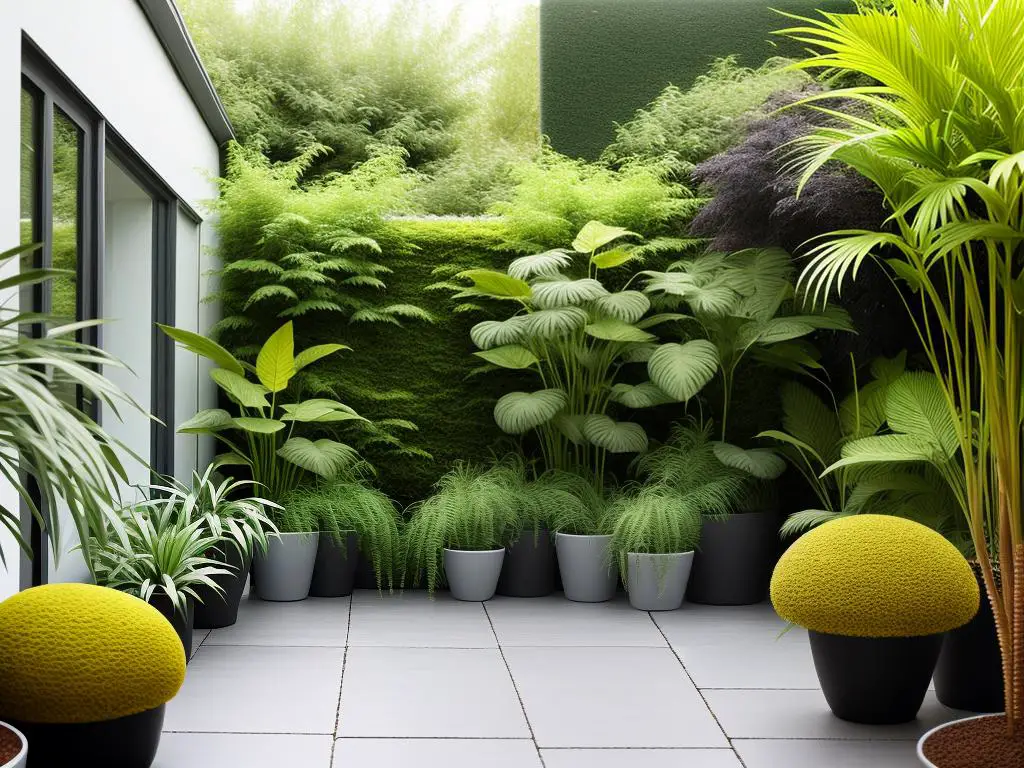
Ultimately, houseplants aren’t just about aesthetics. They create a verdantly enchanting world within your living space, draw you closer to nature, and add a wellness dimension to your life. From understanding their nature and choosing the right ones to tending to them correctly and creating your own miniature indoor garden, you unfold an enriching journey. By taking charge of their life cycle, from propagation to comprehensive care, you bond with your green friends, learn valuable life lessons, and become a part of the prevalent culture of indoor gardening. And all the while, you reap tangible benefits that resonates into a healthier living environment. Both in terms of air quality and visual appeal, houseplants enhance your home, and thereby, the quality of your life. So, venture into this captivating journey of cultivating indoor plants. After all, every houseplant has a story to tell, and it’s time to start writing yours.
